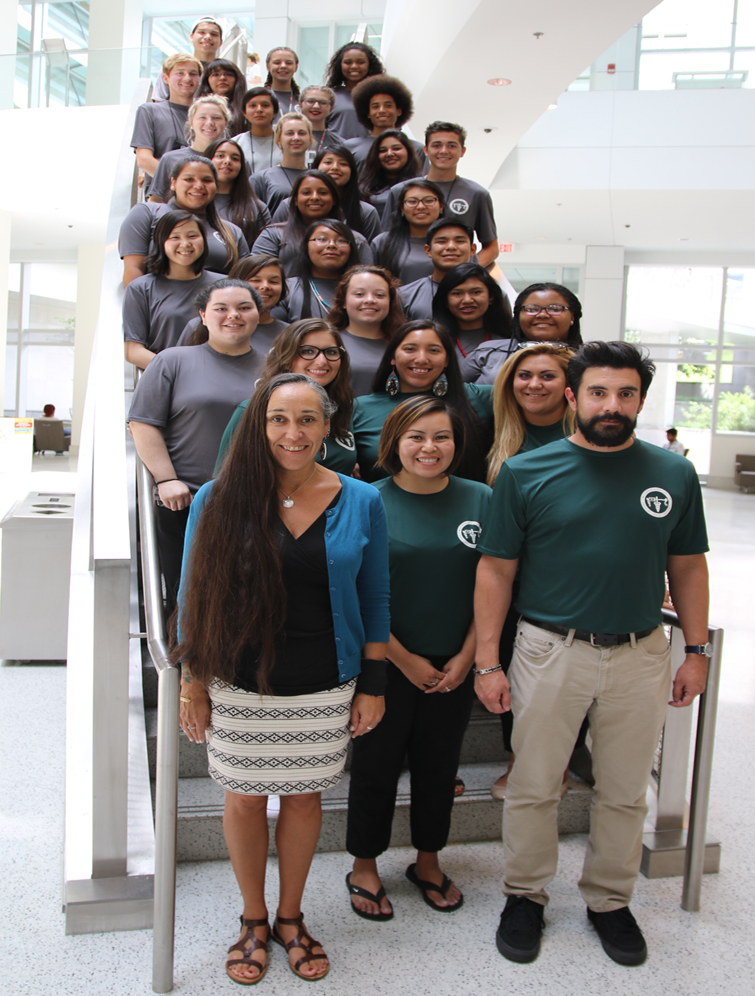The National Native American Youth Initiative Visits NIH

For two days in July, students and staff representing the National Native American Youth Initiative (NNAYI) visited NIH to explore research and careers in biomedical science. Held July 7–8 on the NIH main campus in Bethesda, Maryland, the trans-NIH initiative serves as an opportunity to showcase and introduce biomedical research in operation to high school students who come from communities that are most likely to be underrepresented in biomedical careers, such as those from American Indian and Alaska Native backgrounds.
“Biomedical research careers can serve as a contributor to advancing the elimination of health disparities among racial and ethnic minority populations,” said Dr. DeLoris Hunter, NNAYI program coordinator and health science administrator at the National Institute on Minority Health and Health Disparities (NIMHD). “The observations and compelling reasons for pursuing biomedical research careers that were shared during the NIH visit will resonate with students as they prepare for college and future professional pursuits.”
NIH partners with the Association of American Indian Physicians and the Interamerican College of Physicians and Surgeons for this initiative to identify 25 students between the ages of 16 and 18 from across the United States who have an interest in pursuing a career in healthcare.
NIMHD has led this initiative for NIH for the past 10 years. According to Dr. Hunter, the program opens a door to NIH for the NNAYI scholars, many of whom had never heard of NIH prior to their arrival on campus.
“The visit has opened their eyes to the possibilities of opportunity,” said Polly Olsen, executive director of the Association of American Indian Physicians. “This type of exposure to the biomedical research field is creating a huge impact in the students’ choices to excel in school and look at issues of disease, healthcare, and community in such a way as to become a team for the solution rather than being plagued by [the disease],” said Olsen.
Initial feedback from students gave indication of possible changes in career interest. “A lot of the kids come from rural areas and reservations where they don’t have access to this kind of a facility; everybody was interested in a medical degree yesterday to practice medicine, and then they came to NIH and became interested in research,” said Gary Lankford, director of student programs for the Association of American Indian Physicians.
Not only was gratitude expressed from the facilitators for their NIH visit, but also heard in the words of the students.
“NNAYI is the best decision I’ve made to come here [to NIH],” said student Caitlin LeBlanc of the Bay Mills Indian Community.
“This program has given me many opportunities to network with healthcare professionals,” said student Iesha Phillips of the Muscogee Creek Nation.
Other NIH Institutes and Centers participating in the two-day meeting included the National Institute of Allergy and Infectious Diseases; the National Institute of Diabetes and Digestive and Kidney Diseases; the National Heart, Lung, and Blood Institute; the National Human Genome Research Institute; and the National Library of Medicine.

















